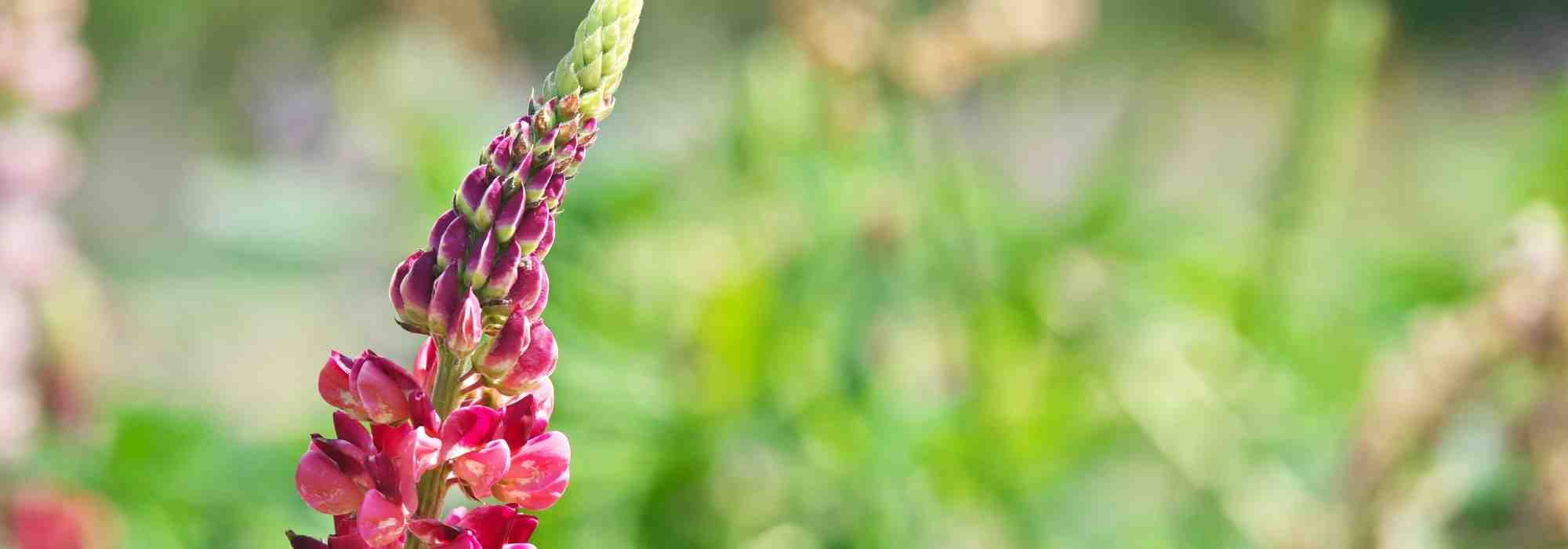
Lupins: 6 pairing ideas
Wise or bold combinations!
Contents
With their impressive flowering spikes from late spring to mid-summer, lupins easily become a focal point in the garden. Their columnar habit is valuable for introducing verticality and structure into the backgrounds or centres of large herbaceous perennial borders, in flower beds, or even in pots near the house. Their large upright spikes covered in pink, white, red, blue, purple, or yellow flowers add depth and fullness to natural gardens where perennial lupins readily self-seed. Easy to pair with other perennial plants, they create charming and romantic or vibrant scenes! Lupins are undoubtedly the centrepieces for English gardens, whether romantic or even extravagant! They are also essential in white, pink, or blue gardens.
Embrace their wild allure and quickly discover our ideas and inspirations for pairing lupins in the garden!
 Lupins, stunning when planted in masses… but not only..
Lupins, stunning when planted in masses… but not only..
In a cottage garden
With their opulent, graphic foliage and plump cones densely packed with pea flowers, lupins easily integrate into an English cottage garden alongside other summer-flowering perennials. Preferably choose varieties with soft, fresh hues, as they will provide a very natural look, perfect for rustic compositions. Lupins in shades of salmon pink or yellow, such as Lupin ‘Le Chandelier’ or ‘Salmon Star’, will be perfect, forming stunning, floriferous clumps all summer long. You can accompany them with delphiniums, centauries, Baptisia, foxgloves (‘Lady’s glove’), Véronicastrum virginicum, yarrow (‘Paprika’), or even cataleptics (‘Summer Snow’, ‘Bouquet rose’). In the background, integrate Eremurus himalaicus, whose tall flower spikes will also add height. In this type of garden, they will thrive alongside hollyhocks, grasses, and peonies, creating lovely, lush beds with minimal maintenance.
 Lupin ‘Le Chandelier’ yellow, herbaceous peonies, yarrow ‘Paprika’, and Veronicastrum
Lupin ‘Le Chandelier’ yellow, herbaceous peonies, yarrow ‘Paprika’, and Veronicastrum
More ideas on our inspiration page Cottage Garden!
Read also
Lupin: sowing, planting and careTo see life in pink!
The beautiful colour palette of lupins ranging from soft pink to intense rose-red allows for all variations. A gentle version around the Lupin ‘Blossom’, with flowers in a very soft pastel pink that pairs well with roses, such as the ‘Mary Rose’ rose, with its cool colours, and Phlox paniculata, with its light heads of large Verbenas from Buenos Aires or with large Lavateras and hollyhocks.
Dare to combine saturated tones by bringing together the pink leading shoots of Lupin ‘Red Rum’ and Lupin ‘Terracotta’, blending rich tones of salmon pink, apricot, and terracotta red, with Cleomes, Asters, ‘Phlox ‘Early Red’, Cosmos, cornflowers, ‘Echinacea ‘Flamingo’ or ‘Pacific summer’, and Oriental Poppies, such as ‘Clochard’.
To avoid suffocation, provide a counterpoint with light, silvery clumps of wormwoods (Artemisia stelleriana ‘Silver Brocade’), and glaucous grasses such as Panicum virgatum ‘Dallas Blues’.
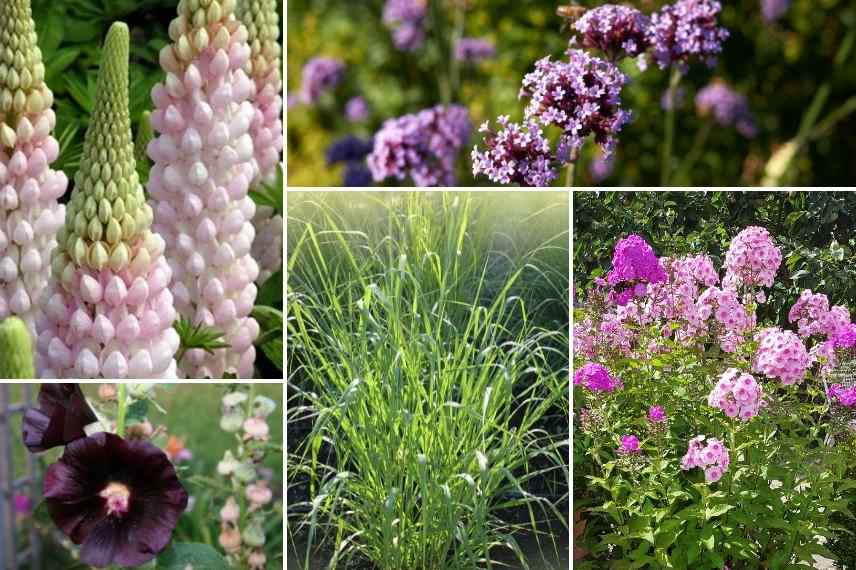
Lupin ‘Blossom’, Verveine de Buenos Aires, purple hollyhock, Panicum virgatum, and Phlox paniculata
Discover other Lupinus - Lupin
View all →Available in 2 sizes
Available in 2 sizes
Available in 2 sizes
Available in 2 sizes
Available in 3 sizes
Available in 1 sizes
Available in 3 sizes
Available in 1 sizes

Available in 2 sizes
Available in 1 sizes
In a romantic border
As lupins generally flower during the rose season, at the end of spring and the beginning of summer, they make excellent companions for roses, creating fresh, opulent, and romantic scenes. For example, you can plant them in groups of three or six alongside a David Austin rose ‘The Ancient Mariner’ or ‘Gérard Depardieu’. Alternatively, against a backdrop of a Seagull climbing rose, mix some clumps of white lupins Lupinus ‘Noblemaiden’ or pink ones Lupinus ‘The Châtelaine’, with astrances, ‘Miss Eckhardt’ peonies, foxgloves, a white delphinium, columbines, Iris germanica, white astrances, white guaras, and ‘Hidcote’ lavenders, along with Papaver orientale in matching colours like ‘Royal Wedding’ or ‘Queen Alexandra’, for instance. Accompany the whole arrangement with the very airy white flowering of gypsophila and grasses for a touch of simplicity.
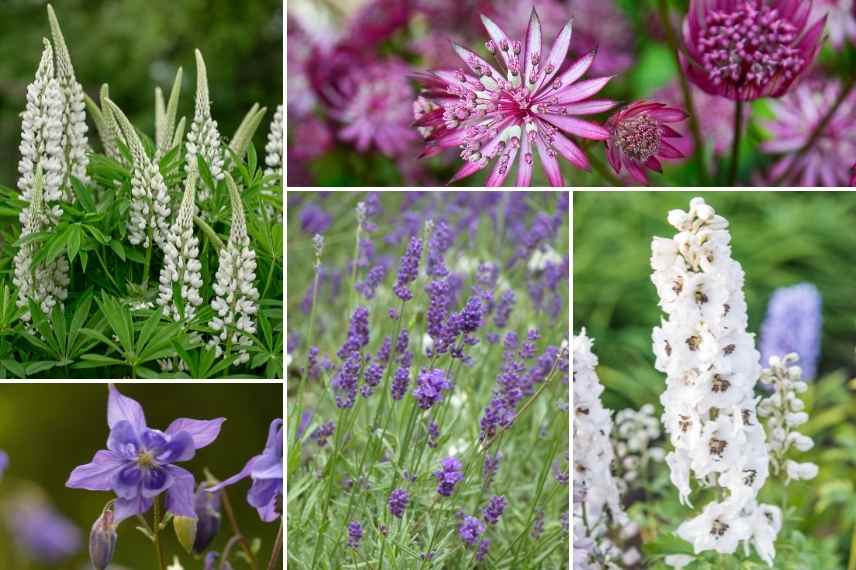
A very romantic scene composed of white Lupins, Astrances, Columbines, ‘Hidcote’ Lavender, and white Delphiniums
To crown a naturalistic meadow
With their tall, quivering silhouette, reaching nearly a metre in height, the great lupins are a stunning addition to a naturalistic meadow, contributing to a wild and natural decor. They have a generous and imposing appearance, providing structure: their colourful and lush leading shoots naturally command attention! They add verticality and create lovely contrasts when paired with plants that have a more airy and flexible habit.
Their slender spikes introduce focal points, especially when contrasted with flat inflorescences like those of Achilleas or with more delicate plants like hollyhocks. Grasses are also essential in these natural areas, such as the majestic Stipa gigantea or the more delicate Stipa pennata, as well as Miscanthus. They counterbalance the vigorous clumps of lupins by adding movement and an infinite lightness. Also consider pairing your lupins with sainfoin, lucerne, perennial sweet peas, and eryngium. Don’t forget about cornflowers, daisies, cosmos, or delphiniums, such as ‘Guinevere’, with pink-lavender flowers.
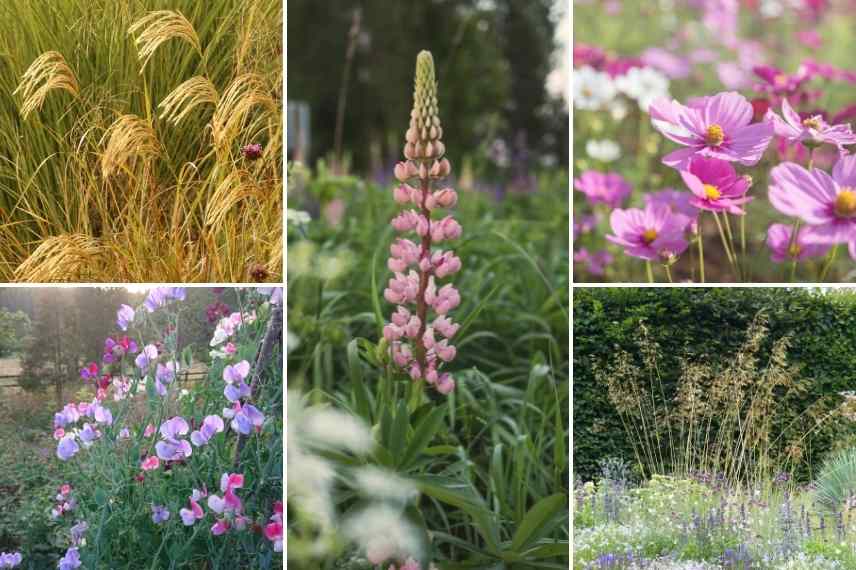 In a naturalistic meadow, pair Lupin with Miscanthus nepalensis, some sweet peas, cosmos, and a Miscanthus ‘Giganteus’
In a naturalistic meadow, pair Lupin with Miscanthus nepalensis, some sweet peas, cosmos, and a Miscanthus ‘Giganteus’
To add depth to a mixed border
The vertical dimension provided by lupins adds volume and structure to a somewhat flat border. They indeed have beautifully cut and vigorous foliage, forming clumps that easily reach heights of around 90 cm to 1 m. Plant them in the background of climbing roses. Integrate alongside them other spikes such as those of Delphiniums, Verbascum with their upright flower spikes, which are very structural, and Baptisia such as the varieties ‘Lemon Meringue’ and ‘Cherries Jubilee’, Veronicas, and Steppe Lilies, which will enliven this area by creating vertical and graphic colour accents, immediately infusing vitality and dynamism into the composition. Complete the ensemble with lower plants, such as hostas, geums, lady’s mantle, campanulate plants, and hardy geraniums. 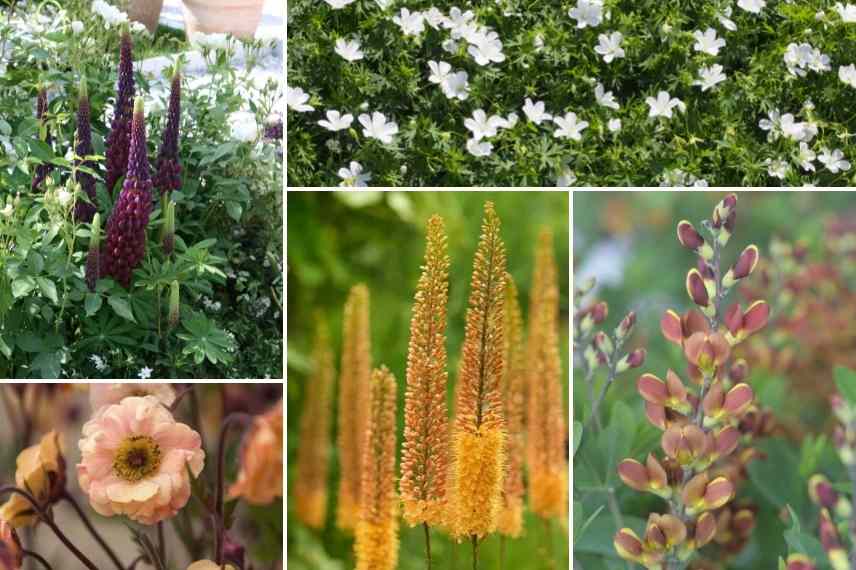 Lupins, Geum ‘Mai Tai’, hardy geraniums, Eremurus ‘Pinnokio’, and Baptisia ‘Cherries Jubilee’
Lupins, Geum ‘Mai Tai’, hardy geraniums, Eremurus ‘Pinnokio’, and Baptisia ‘Cherries Jubilee’
To contrast harmonious colour schemes
Lupins or Lupinus display vibrant and varied colours, allowing for contrasting visual effects or, conversely, a harmonious colour scheme. You can thus dare to create a vibrant combination of pink/green with a lupin ‘Gallery Pink’, the aniseed flowers of Alchemilla, a Kniphofia ‘Green Jade’, ’Echinacea ‘Green Jewel’, and the glaucous foliage of Euphorbias and Hostas.
For a refreshing tone-on-tone scene, pair a Lupinus ‘La Demoiselle’ or ‘Polar Princess’ with a Cornus controversa ‘Variegata’, and a Miscanthus ‘Morning Bright’. Lighten the ensemble with an airy perennial like Sanguisorba ‘Alba’.

Freshness of white Lupins alongside a Cornus controversa ‘Variegata’, Miscanthus ‘Morning Bright’, and Sanguisorba ‘Alba’
To give a pot arrangement some airiness
To introduce an interesting focal point on your terrace or balcony, the less imposing varieties of Lupins, such as the Lupin ‘Avalune Lilac’, a dwarf annual variety, as well as the Gallery hybrid series (‘Yellow’), which are very sturdy, vigorous, and remarkably floriferous, are well-suited for cultivation in large pots. They will require sunlight, a rich and well-draining substrate, and should be repotted every two years. They will look wonderful mixed with the spikelets of small feathery grasses (Pennisetum villosum, Hordeum jubatum, Stipa pennata) and the flowering of Asters, hardy geraniums, Dianthus, moss Phlox, and dwarf campanulas.

Lupin ‘Avalune Lilac’, accompanied by Asters cordifolius ‘Little Carlow’, Pennisetum villosum, Dianthus, and Phlox subulata
- Subscribe!
- Contents
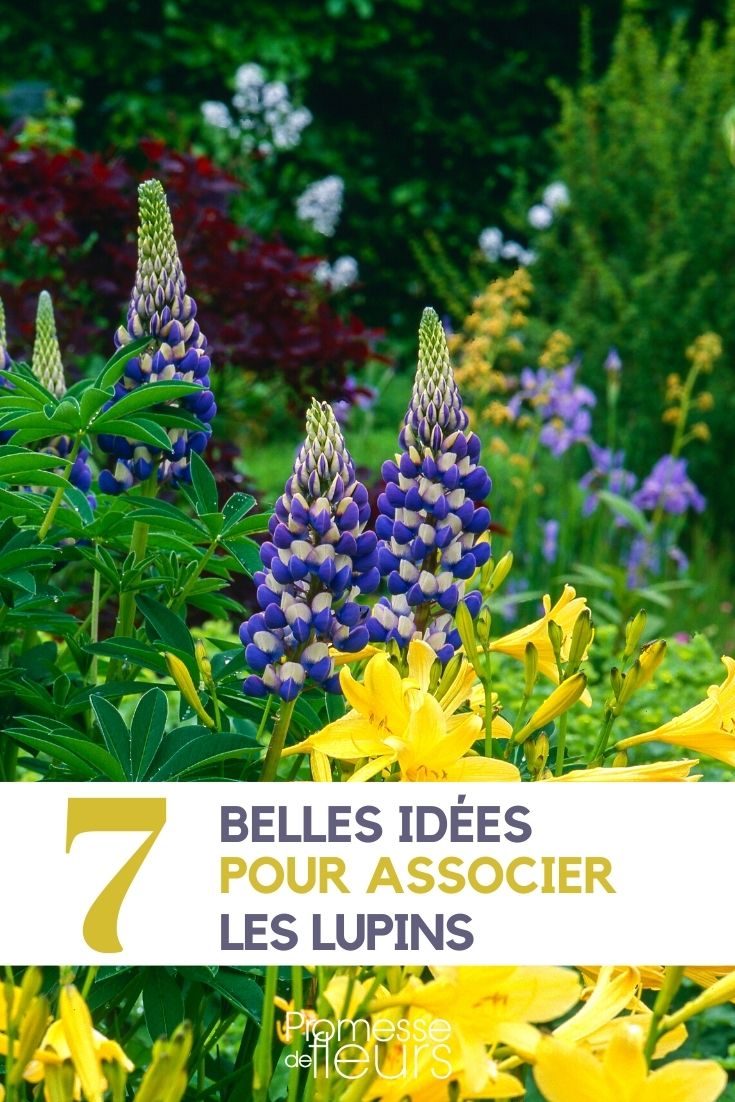































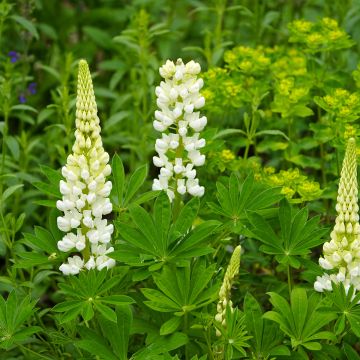

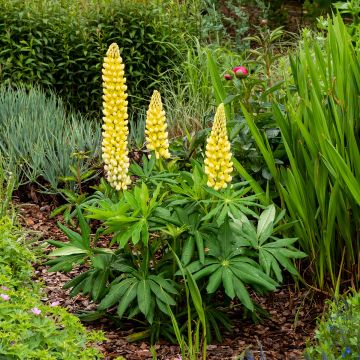
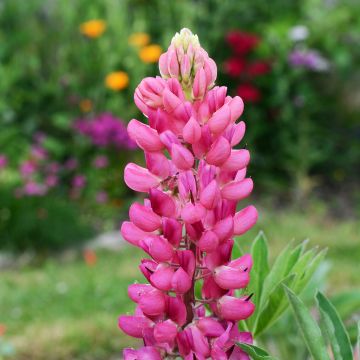
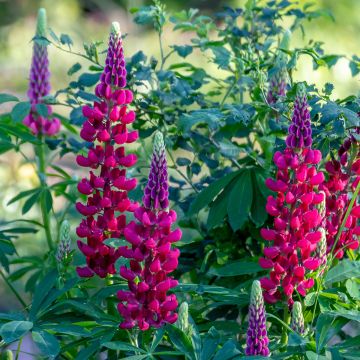
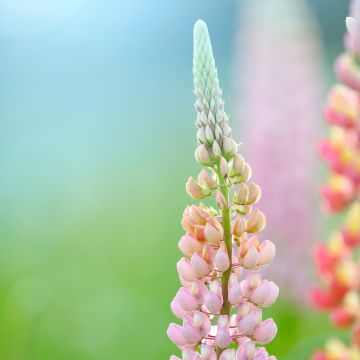
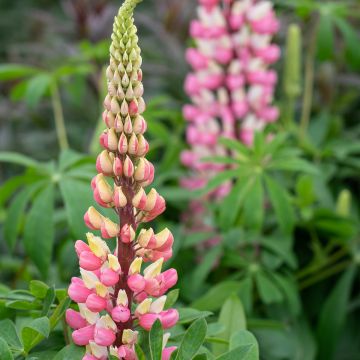
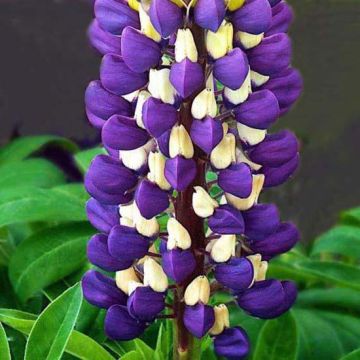
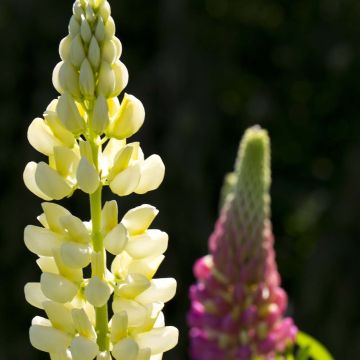
Comments